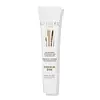What's inside
What's inside
 Key Ingredients
Key Ingredients

No key ingredients
 Benefits
Benefits

 Concerns
Concerns

 Ingredients Side-by-side
Ingredients Side-by-side

Water
Skin ConditioningGlycerin
HumectantMyristic Acid
CleansingLauric Acid
CleansingPotassium Hydroxide
BufferingKaolin
AbrasiveStearic Acid
CleansingGlyceryl Stearate
EmollientLauryl Hydroxysultaine
CleansingGlycol Distearate
EmollientPalmitic Acid
EmollientLauryl Glucoside
CleansingPolyquaternium-22
Parfum
MaskingSalicylic Acid
MaskingSilica
AbrasiveOnsen-Sui
Zinc PCA
HumectantVolcanic Ash
AbrasiveDisodium EDTA
Propanediol
SolventLactic Acid/Glycolic Acid Copolymer
Skin Conditioning1,2-Hexanediol
Skin ConditioningMadecassoside
AntioxidantPolyquaternium-10
Ethylhexylglycerin
Skin ConditioningWater, Glycerin, Myristic Acid, Lauric Acid, Potassium Hydroxide, Kaolin, Stearic Acid, Glyceryl Stearate, Lauryl Hydroxysultaine, Glycol Distearate, Palmitic Acid, Lauryl Glucoside, Polyquaternium-22, Parfum, Salicylic Acid, Silica, Onsen-Sui, Zinc PCA, Volcanic Ash, Disodium EDTA, Propanediol, Lactic Acid/Glycolic Acid Copolymer, 1,2-Hexanediol, Madecassoside, Polyquaternium-10, Ethylhexylglycerin
Water
Skin ConditioningLauryl Glucoside
CleansingCocamidopropyl Betaine
CleansingTuber Melanosporum Extract
HumectantCarica Papaya Leaf Extract
TonicGlycerin
HumectantCitrus Aurantium Dulcis Flower Extract
Skin ConditioningOlea Europaea Leaf Extract
PerfumingCitrus Aurantium Amara Flower Extract
RefreshingCucumis Sativus Fruit Extract
EmollientLavandula Angustifolia Flower Extract
CleansingCalendula Officinalis Flower Extract
MaskingSodium Lauroyl Oat Amino Acids
CleansingSodium Cocoamphoacetate
CleansingParfum
MaskingDehydroacetic Acid
PreservativeBenzoic Acid
MaskingPotassium Sorbate
PreservativeSodium Benzoate
MaskingBenzyl Alcohol
PerfumingCitric Acid
BufferingCoumarin
PerfumingWater, Lauryl Glucoside, Cocamidopropyl Betaine, Tuber Melanosporum Extract, Carica Papaya Leaf Extract, Glycerin, Citrus Aurantium Dulcis Flower Extract, Olea Europaea Leaf Extract, Citrus Aurantium Amara Flower Extract, Cucumis Sativus Fruit Extract, Lavandula Angustifolia Flower Extract, Calendula Officinalis Flower Extract, Sodium Lauroyl Oat Amino Acids, Sodium Cocoamphoacetate, Parfum, Dehydroacetic Acid, Benzoic Acid, Potassium Sorbate, Sodium Benzoate, Benzyl Alcohol, Citric Acid, Coumarin
 Reviews
Reviews

Ingredients Explained
These ingredients are found in both products.
Ingredients higher up in an ingredient list are typically present in a larger amount.
Glycerin is already naturally found in your skin. It helps moisturize and protect your skin.
A study from 2016 found glycerin to be more effective as a humectant than AHAs and hyaluronic acid.
As a humectant, it helps the skin stay hydrated by pulling moisture to your skin. The low molecular weight of glycerin allows it to pull moisture into the deeper layers of your skin.
Hydrated skin improves your skin barrier; Your skin barrier helps protect against irritants and bacteria.
Glycerin has also been found to have antimicrobial and antiviral properties. Due to these properties, glycerin is often used in wound and burn treatments.
In cosmetics, glycerin is usually derived from plants such as soybean or palm. However, it can also be sourced from animals, such as tallow or animal fat.
This ingredient is organic, colorless, odorless, and non-toxic.
Glycerin is the name for this ingredient in American English. British English uses Glycerol/Glycerine.
Learn more about GlycerinLauryl Glucoside sugar- and lipid-based cleansing agent. It is created from glucose and lauryl alcohol.
This ingredient is a surfactant, making it easier to rinse oil, dirt, and other pollutants away.
A British study found lauryl glucoside to cause skin sensitivity for some people. We recommend speaking with a professional if you have concerns.
Other names for this ingredient include "Lauryl Polyglucose", "Lauryl glycoside", and "D-Glucopyranoside".
Learn more about Lauryl GlucosideParfum is a catch-all term for an ingredient or more that is used to give a scent to products.
Also called "fragrance", this ingredient can be a blend of hundreds of chemicals or plant oils. This means every product with "fragrance" or "parfum" in the ingredients list is a different mixture.
For instance, Habanolide is a proprietary trade name for a specific aroma chemical. When used as a fragrance ingredient in cosmetics, most aroma chemicals fall under the broad labeling category of “FRAGRANCE” or “PARFUM” according to EU and US regulations.
The term 'parfum' or 'fragrance' is not regulated in many countries. In many cases, it is up to the brand to define this term.
For instance, many brands choose to label themselves as "fragrance-free" because they are not using synthetic fragrances. However, their products may still contain ingredients such as essential oils that are considered a fragrance by INCI standards.
One example is Calendula flower extract. Calendula is an essential oil that still imparts a scent or 'fragrance'.
Depending on the blend, the ingredients in the mixture can cause allergies and sensitivities on the skin. Some ingredients that are known EU allergens include linalool and citronellol.
Parfum can also be used to mask or cover an unpleasant scent.
The bottom line is: not all fragrances/parfum/ingredients are created equally. If you are worried about fragrances, we recommend taking a closer look at an ingredient. And of course, we always recommend speaking with a professional.
Learn more about ParfumWater. It's the most common cosmetic ingredient of all. You'll usually see it at the top of ingredient lists, meaning that it makes up the largest part of the product.
So why is it so popular? Water most often acts as a solvent - this means that it helps dissolve other ingredients into the formulation.
You'll also recognize water as that liquid we all need to stay alive. If you see this, drink a glass of water. Stay hydrated!
Learn more about Water